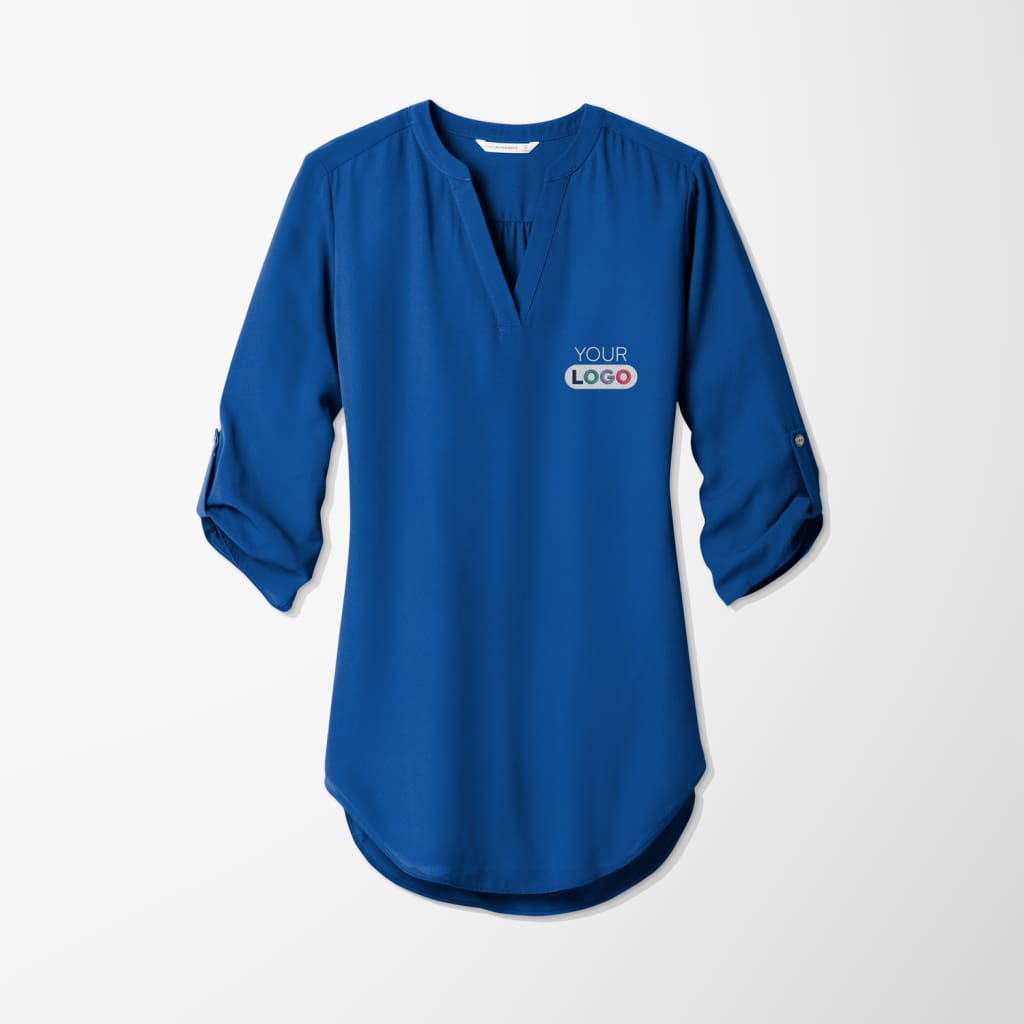Comprehending Clothing: The Relevance of Textile Options in Your Closet
The choice of textile in apparel plays a pivotal role in both looks and functionality. Various products use varying levels of convenience, toughness, and breathability, straight influencing the wearer's experience. Understanding these subtleties can enhance one's wardrobe substantially. Yet, numerous overlook how these selections can affect not just personal style, yet additionally sustainability. What fabric choices could redefine your closet and align it with both style and obligation?
The Role of Textile in vogue and Performance

Common Textile Kinds and Their Characteristics
When choosing apparel, comprehending the features of usual textile types is important for making educated options. Cotton, a widely-used natural fiber, is known for its adaptability, softness, and breathability, making it ideal for casual wear and daily garments. Bed linen, one more all-natural alternative, boasts exceptional moisture-wicking residential properties and a distinct appearance, suitable for cozy climates.Wool, commonly favored for its heat and resilience, varies in fineness; merino wool is soft against the skin, while coarser kinds are made use of for outerwear. Synthetic textiles like polyester and nylon supply toughness and resistance to wrinkles, making them preferred for activewear and traveling garments. Blends, which integrate synthetic and all-natural fibers, can improve performance while keeping convenience. By recognizing these material attributes, people can pick apparel that straightens with their lifestyle and visual preferences.
Breathability and Convenience: Choosing the Right Fabrics for Various Environments
Selecting the best textiles for different climates can considerably improve comfort and total wearability. Breathable products are vital in hot environments, as they permit air flow and moisture evaporation. Fabrics such as cotton, bed linen, and moisture-wicking synthetics properly draw sweat far from the body, keeping the wearer cool and dry. On the other hand, in cooler climates, thicker textiles like woollen or fleece give insulation while keeping breathability, making certain heat without overheating.Additionally, the option of textile weight plays a crucial role; light-weight materials are more suitable for summer, whereas larger options are matched for winter wear. Recognizing the distinct residential or commercial properties of each material enables people to dress appropriately for differing climate condition. Inevitably, picking breathable and comfortable materials customized to particular environments can substantially improve everyday convenience and enhance the general experience of using apparel.
Toughness and Treatment: Exactly How Textile Affects Long Life of Your Closet
Selecting the ideal products can significantly affect the toughness and care demands of a wardrobe. Fabrics such as cotton and polyester are known for their durability and ease of maintenance, making them perfect for day-to-day wear. In contrast, delicate materials like silk and lace require more cautious handling and specialized cleansing techniques, which can enhance the moment and initiative required for care. Branded Clothing.Durability is also influenced by the fabric's weave and finish; securely woven textiles tend to stand up to deterioration much better than loosely woven options. In addition, synthetic blends commonly provide boosted durability, integrating the most effective top qualities of several fibers.Understanding the treatment guidelines for each and every fabric is essential, as improper washing or drying out can result in premature wear. Inevitably, picking sturdy products can bring about a longer-lasting closet, minimizing the regularity of substitutes and adding to a much more lasting fashion option
The Effect of Fabric on Fit and Shape

Lasting Textile Options: Making Eco-Friendly Decisions
The influence of fabric prolongs past fit and shape to encompass ecological variables, prompting an expanding passion the original source in lasting fabric options. Environmentally friendly fabrics, such as natural cotton, hemp, and Tencel, are acquiring traction amongst consumers that prioritize sustainability in their wardrobes. These products are usually created with less chemicals and water, lowering their eco-friendly footprint.Additionally, recycled textiles, made from post-consumer waste, provide an ingenious remedy to the textile industry's contamination issue. Brands significantly welcome openness in their sourcing approaches, permitting consumers to make informed choices concerning their purchases.Choosing lasting fabrics not only supports ethical methods yet additionally encourages the style industry to take on even more accountable production methods. As awareness of environmental problems rises, individuals are advised to review the lasting impact of their fabric options, fostering a movement in the direction of a much more ecologically conscious and lasting strategy to fashion.
Raising Design: Just How Textile Can Change an Attire
While numerous might focus on color and cut when choosing an attire, the choice of textile plays a necessary duty in raising design and enhancing overall appearance. Various products share unique moods and messages; as an example, silk radiates deluxe and sophistication, while jeans provides a casual, kicked back vibe. The appearance and drape of a fabric can substantially change the shape, with organized fabrics giving a sleek appearance and softer ones producing a more fluid, relaxed aesthetic.Moreover, the weight of the textile influences wearability throughout seasons. Lightweight fabrics like linen and cotton are perfect for summertime, while much heavier products such as wool and velour give heat and sophistication in chillier months. Understanding material residential or commercial properties, such as breathability and stretch, also encourages people to make enlightened selections that boost convenience without compromising design. Eventually, the best material can change an attire from ordinary to amazing, making it an essential factor to consider in any kind of wardrobe.
Frequently Asked Questions
Exactly how Do I Recognize the Fabric Content of My Apparel?
To recognize textile web content, one can take a look at care labels, conduct melt examinations for fiber recognition, or seek advice from fabric swatches. These approaches aid separate materials, guaranteeing informed options for garments care and maintenance in daily wear.
Can Fabric Option Affect My State Of Mind or Confidence?
Material choice can considerably affect a person's mood and confidence. Branded Clothing. Specific products may evoke feelings of comfort or style, while others can feel restrictive or uncomplimentary, ultimately affecting self-perception and emotional well-being throughout the day
What Fabrics Are Finest for Delicate Skin?
For individuals with sensitive skin, all-natural materials like cotton, bed linen, and bamboo are commonly suggested. These materials are breathable, hypoallergenic, and my review here less most likely to create irritation, making them ideal selections for comfort and skin health.
Exactly how Do I Appropriately Wash and Care for Different Fabrics?
To appropriately care and wash for various fabrics, one should think about each material's specific needs, including temperature level setups, cleaning agents, and drying out techniques, making certain long life and maintaining the fabric's initial high qualities for perfect use.
Exist Certain Fabrics for Athletic or Efficiency Put On?
Sports or efficiency wear usually makes use of textiles such as spandex, nylon, and polyester. These products are designed for moisture-wicking, breathability, and flexibility, enhancing activity and comfort during exercises while supplying toughness and support. Conversely, in colder environments, thicker textiles like wool or fleece provide insulation while maintaining breathability, ensuring heat without overheating.Additionally, the selection of material weight plays a crucial duty; lightweight textiles are more effective for summer, whereas heavier alternatives are matched for winter months wear. In contrast, delicate materials like silk and lace need even more mindful handling and specialized cleansing methods, which can raise the time and initiative needed for my explanation care.Durability is additionally affected by the material's weave and finish; firmly woven fabrics tend to resist wear and tear better than loosely woven alternatives. In contrast, stiff fabrics can limit motion however offer a classic, refined look.Moreover, the density and texture of the material can influence the aesthetic perception of body shape. The effect of material extends past fit and shape to incorporate ecological aspects, motivating an expanding passion in sustainable fabric selections. The texture and drape of a fabric can drastically change the silhouette, with structured materials giving a sleek appearance and softer ones producing a much more fluid, unwinded aesthetic.Moreover, the weight of the material affects wearability throughout periods.
Comments on “How Branded Clothing Enhances Your Style Through Thoughtful Fabric Use”